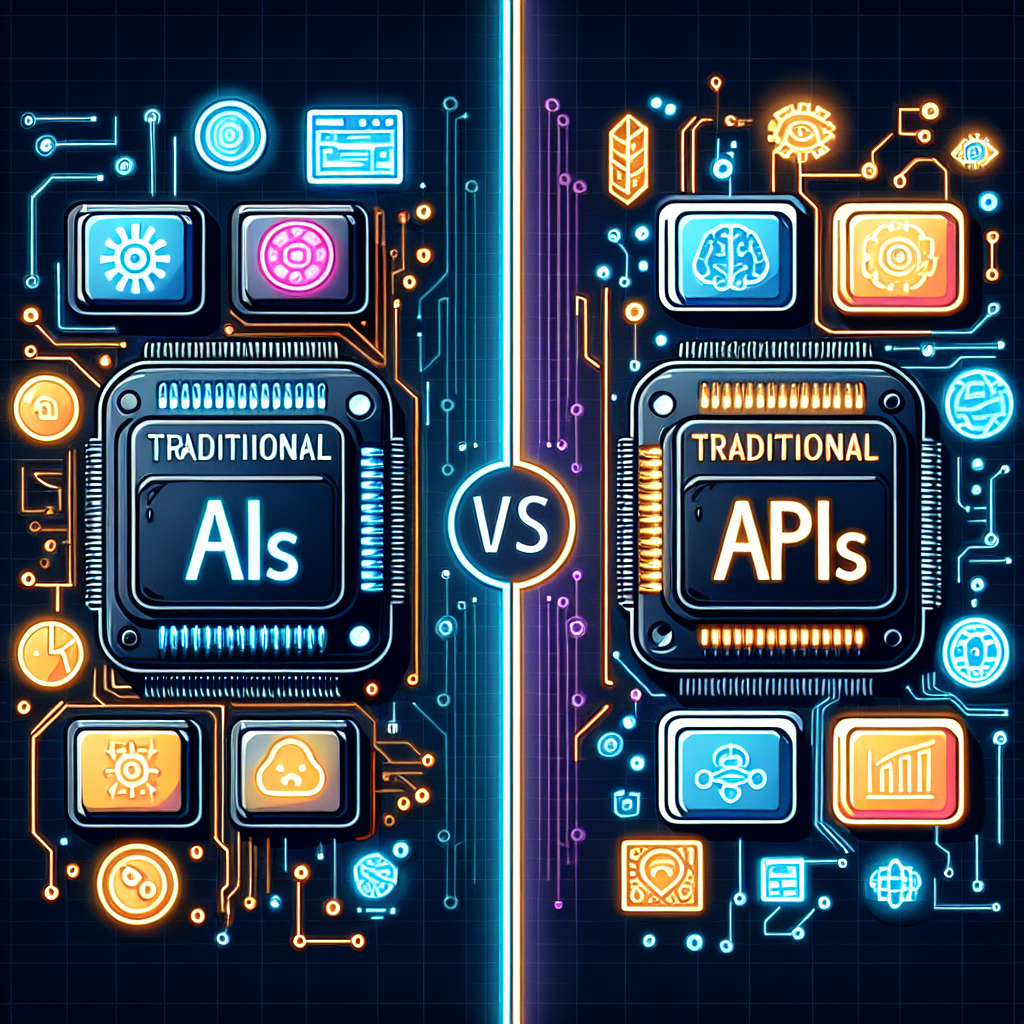In today’s increasingly digital landscape, APIs (Application Programming Interfaces) are essential building blocks for software applications. They enable communication between various systems and allow developers to utilize external services effectively. With the advent of artificial intelligence (AI), a new category has surfaced: AI APIs. While both traditional and AI APIs aim to streamline the development process, they offer distinct features that influence their functionality, use cases, and significance in modern technology.
What Are Traditional APIs?
Traditional APIs enable software systems to communicate with one another. They expose specific functionalities or data from one application to another, typically adhering to established protocols like REST (Representational State Transfer) or SOAP (Simple Object Access Protocol). These APIs usually rely on predefined data structures and fixed interaction rules.
Characteristics of Traditional APIs:
- Defined Endpoints: Developers create specific endpoints that offer targeted functions.
- Data Formats: Communication generally employs standard data formats such as JSON or XML.
- Predictable Outputs: Traditional APIs generally return a consistent data structure every time they are called.
- Statelessness: Most traditional APIs operate in a stateless manner, where each request is isolated and does not depend on prior interactions.
Use Cases of Traditional APIs:
- Data Retrieval: Accessing databases or obtaining data from web services.
- Integration: Connecting various software systems for a seamless user experience.
- Functionality Sharing: Enabling third-party applications to use core features like payment processing.
What Are AI APIs?
In contrast, AI APIs are designed to provide access to a range of artificial intelligence capabilities. These encompass aspects like natural language processing, machine learning models, and computer vision. The goal is to make sophisticated AI functionalities readily available to developers so they can incorporate advanced features into their applications without extensive knowledge of the underlying technology.
Characteristics of AI APIs:
- Dynamic Learning: Many AI APIs utilize machine learning models that adapt and evolve with new data, leading to less predictable outputs.
- Complex Data Handling: AI APIs often manage intricate data types, including text, images, and audio.
- Inferential Outputs: Outputs from AI APIs can vary based on the context of input, making them less predictable than traditional APIs.
- Resource Intensity: AI APIs typically require more computational resources due to processing large datasets or performing complex calculations.
Use Cases of AI APIs:
- Natural Language Processing (NLP): Empowering chatbots and virtual assistants to understand and respond to human language.
- Computer Vision: Allowing applications to interpret and analyze visual information effectively.
- Recommendation Systems: Offering personalized content or product suggestions based on user behavior and preferences.
Key Differences: AI APIs vs. Traditional APIs
1. Predictability
- Traditional APIs deliver consistent outputs based on predefined rules and parameters.
- AI APIs provide outputs that may vary significantly based on context, learning from each interaction.
2. Complexity
- Traditional APIs typically handle straightforward, structured data.
- AI APIs address the complexities of unstructured data, such as images or natural language, which require advanced processing techniques.
3. Learning Capability
- Traditional APIs are static, performing the same task repetitively without learning from interactions.
- AI APIs employ machine learning for ongoing enhancement, adapting to new data and refining their outputs over time.
4. Resource Demands
- Traditional APIs are generally less resource-intensive and simpler to deploy.
- AI APIs often necessitate substantial computational resources, such as GPUs, for optimal functionality.
Why It Matters
Grasping the distinctions between AI APIs and traditional APIs is vital for developers, businesses, and technologists as they select the most suitable tools for their projects. Here’s why this understanding is important:
- Project Planning: Recognizing the characteristics of each API type aids in planning applications that meet specific needs and expectations.
- Cost Management: AI APIs can be resource-heavy; businesses must factor in these costs when integrating them into their systems.
- User Experience: The choice between an AI API and a traditional API can greatly influence user interaction. Understanding their functionalities can lead to designs that enhance user experience.
- Future Readiness: As AI technology evolves and becomes more integral to software development, understanding AI APIs will be crucial for remaining competitive in the market.
Conclusion
While AI APIs and traditional APIs play different roles in software development, each presents unique characteristics and implications. Traditional APIs offer reliability and predictability, whereas AI APIs introduce dynamic capabilities that enable applications to engage intelligently with users and data. As technology continues to advance, grasping the relationship between these API types will be essential for any developer or organization aiming to innovate and adapt within a rapidly changing digital landscape.

